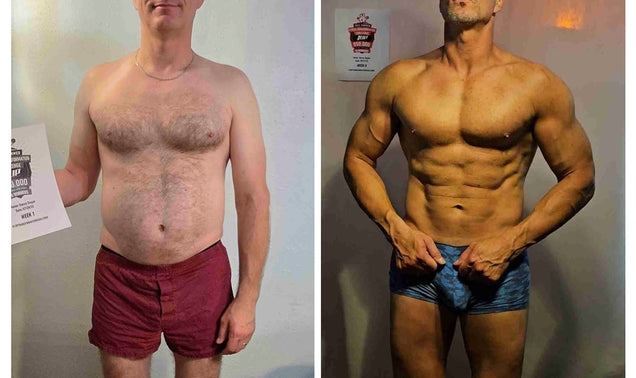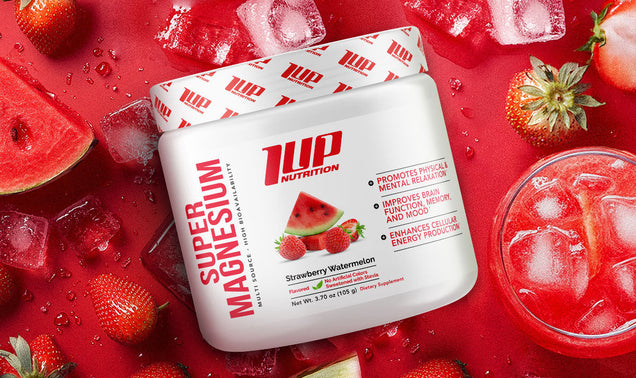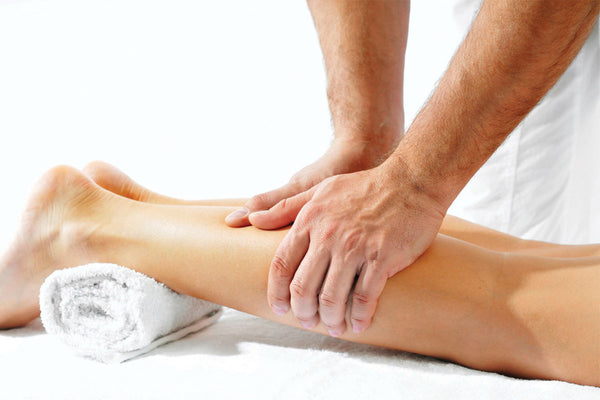Your ability to crush your workouts, burn calories, and build muscle, is directly tied to how well you recover from the previous days training session. What’s more is that each of us have a finite amount we can recover. And, to top it off, each of us have a slightly different recovery rate than another person.
What impacts recovery?
Just about everything.
Your genetics, age, training history, injury history, workout intensity, workout frequency, sleep, stress levels, protein intake, and whether you’re in a calorie surplus (bulking) or calorie deficit (cutting) all impact how well and how quickly you recover from your workouts.
For example, someone who is in a calorie surplus, sleeps eight hours per night and is in their mid 20s will generally recover a lot faster than a 30-something who’s stressed all the time, dieting, and sleeping 4-5 hours per night.
But, what if you’re already doing everything we listed above to ensure proper recovery, but you’re still feeling beat down from one workout to the next and not really seeing the results you’d like to?
Well, you could try some active recovery protocols like stretching, foam rolling, hiking, or yoga. But sometimes, these active recovery methods actually dig further into our recovery capacity, especially if we’re not familiar with them.
There is, however, one form of recovery, that is incredibly restorative on the body, and the best part is that you don’t even have to lift a finger. Yet, it will enhance your performance in the gym as well as your muscle growth!
What recovery method is this?
Massage therapy.
Here we discuss five big benefits of massage therapy for muscle growth.
Benefits of Massage Therapy for Muscle Growth
Enhances Flexibility
To get the most out of each exercise you perform in your workouts, you should be using a full range of motion. In order to achieve that full range of motion, you need to have a certain amount of flexibility.
However, from a combination of years of hard training coupled with the sedentary nature of most jobs these days, many of us are sorely lacking the flexibility department.
Moreover, training with higher volumes and heavier weights also can lead to the development of increased muscle tightness, adhesions (muscle, fascia, and other tissues “sticking” together, and scar tissue. Each of these reduces your flexibility, limits the amount of muscle growth you can get from an exercise, and increases your risk of injury.
Massage therapy helps relax and stretch the muscle fibers, thereby improving your flexibility.[6]
Furthermore, massage therapy can also help rub out any tightness imbalances you may have between opposing muscle groups. For instance, we’ve all seen the lifter at the gym who walks around hunched over like quasimodo.
One of the reasons for this is due to overly tight pecs and lats, and underdeveloped rhomboids. Massage therapy can help undo these imbalances, find relief, and improve posture.
Helps Relieve Pain
Any type of physically demanding workout, whether it be a high volume, heavy weight resistance-training workout or an all day endurance-based one (such as a triathlon), is sure to leave your muscles sore, achy, and in dire need of recovery.
If we’re still in pain from our previous workout heading into our next bout of training or competition, the odds that we will perform our best are slim to none.
You see, aches and pains can be a very distracting thing, and it can even make us a bit timid in how we approach our training for fear that we might exacerbate whatever muscle or joint ails us.
The beauty of massage therapy is that it can help relieve those aches and pains, enabling us to perform to our fullest.
Remember, pain is a message to the body that something is wrong. Massaging can help iron out the kinks, so that you can perform pain free and keep making PRs.
Accelerates Recovery
Remember up top, when we said that each of us has a very limited capacity to recover from our training?
Well, getting a massage can help reduce tension in the body, both mentally and physically, which helps accelerate recovery. In fact, studies have shown that massage therapy may help alleviate delayed onset muscle soreness (DOMS) by approximately 30%, and it may also help reduce swelling following exercise.[3]
Furthermore, massages can also be incredibly relaxing, which helps decrease cortisol and anxiety levels[1], which fosters quicker recovery.
And, as you’re probably aware, the more quickly and better that you recover, the more frequently you’ll be able to train, and the greater volume and intensity with which you can train.
This ultimately leads to greater results from your workout program, be it fat loss, muscle gain, or body recomposition.
Enhances Sleep Quality
Getting enough quality sleep each night is essential to recovery, fat loss, and muscle growth. There’s no two ways about it.
Research has shown that getting a massage can improve both sleep quality and duration.[2]
Why is this important for muscle growth?
Because it is when we sleep that the body is awash in recovery-boosting and muscle-building hormones like Growth Hormone.[4,5]
Also, remember that massages help relieve tension in the body, both mentally and physically. Very often if we’re overly tense in our muscles or troubled by our thoughts, we have difficulty sleeping.
Massage therapy helps relieve tension, allowing for a deeper, longer, and more restorative sleep that supports subsequent workout performance and muscle growth.
Improves Circulation
Blood is the “life force” of the body. It carries all of the essential nutrients our bodies require -- oxygen, glucose, amino acids, etc. -- to not only build and repair muscle tissue but to carry out the basic functions of life.
The more efficiently your heart to pump blood, and the more effectively your cardiovascular network can supply these life-sustaining nutrients to your muscles, the more quickly they can begin their repair, recovery, and growth mechanisms after training.
It just so happens that there is some research indicating that massage therapy can improve circulation and reduce muscle soreness.[7] In fact, getting a massage after training may even enhance blood flow throughout the body for up to 72 hours post-exercise![7]
And, massage therapy may also help lower blood pressure, a key marker of proper circulation and cardiovascular health.[1]
Takeaway
When it comes to recovering from training and building bigger, stronger muscles, things like stretching, foam rolling, and sauna bathing are always recommended. And, don’t get us wrong, then can certainly help your results.
But, massage therapy also has some unique benefits to offer for recovery and muscle growth. Next time, you’re feeling sore, achy, and a bit too beat up from your intense workout, try giving massage therapy a try. It might just be the “secret weapon” you’ve been looking for to enhance your results.
References
- Chen WL, Liu GJ, Yeh SH, Chiang MC, Fu MY, Hsieh YK. Effect of back massage intervention on anxiety, comfort, and physiologic responses in patients with congestive heart failure. J Altern Complement Med. 2013;19(5):464–470. doi:10.1089/acm.2011.0873
- Sable A, Sivabalan T, Shetti AN. Effectiveness of Back Massage on Sleep Pattern among Patients with Congestive Cardiac Failure. Iran J Nurs Midwifery Res. 2017;22(5):359–362. doi:10.4103/ijnmr.IJNMR_142_16
- Zainuddin Z, Newton M, Sacco P, Nosaka K. Effects of massage on delayed-onset muscle soreness, swelling, and recovery of muscle function. J Athl Train. 2005;40(3):174–180.
- Van Cauter, E., & Plat, L. (1996). Physiology of growth hormone secretion during sleep. The Journal of Pediatrics, 128(5 Pt 2), S32-7.
- Van Cauter, E., Latta, F., Nedeltcheva, A., Spiegel, K., Leproult, R., Vandenbril, C., Copinschi, G. (2004). Reciprocal interactions between the GH axis and sleep. Growth Hormone & IGF Research : Official Journal of the Growth Hormone Research Society and the International IGF Research Society, 14 Suppl A, S10-7. https://doi.org/10.1016/j.ghir.2004.03.006
- Kennedy AB, Patil N, Trilk JL. 'Recover quicker, train harder, and increase flexibility': massage therapy for elite paracyclists, a mixed-methods study. BMJ Open Sport Exerc Med. 2018;4(1):e000319. Published 2018 Jan 26. doi:10.1136/bmjsem-2017-000319
- Nina C. Franklin, Mohamed M. Ali, Austin T. Robinson, Edita Norkeviciute, Shane A. Phillips. Massage Therapy Restores Peripheral Vascular Function following Exertion. Archives of Physical Medicine and Rehabilitation, 2014; DOI: 10.1016/j.apmr.2014.02.007






